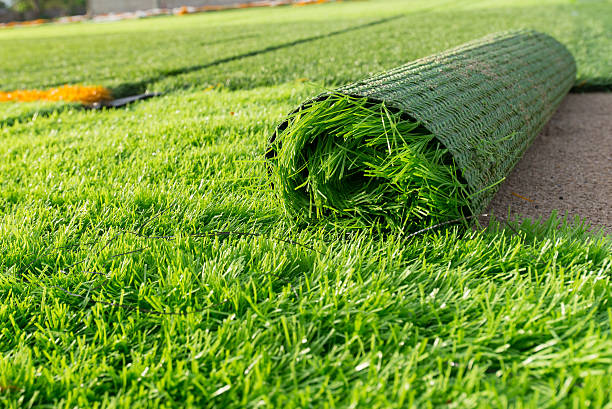
Artificial grass is an excellent choice for those seeking a low-maintenance, beautiful lawn. It’s durable, aesthetically pleasing, and perfect for homes, businesses, and recreational areas. However, to ensure it continues to look great and lasts for years, proper maintenance is essential. Here’s a comprehensive guide to artificial grass maintenance, covering everything you need to know.
Why Artificial Grass Needs Maintenance
While artificial grass doesn’t require the same level of care as natural grass, some maintenance is necessary to keep it looking its best. Over time, dirt, debris, and even pet waste can accumulate, potentially affecting the appearance and hygiene of the turf. Regular upkeep helps prevent this buildup and keeps your lawn clean, safe, and inviting. Additionally, taking care of your artificial grass ensures its longevity, protecting your investment.
Cleaning Your Artificial Grass
One of the simplest yet most effective artificial grass maintenance tasks is cleaning your artificial grass. While it doesn’t need to be mowed or watered, it should be cleaned regularly to prevent dirt from building up.
Start by removing large debris like leaves, twigs, and litter using a leaf blower or rake. This will ensure that the grass is free of obstructions, allowing the fibers to stand up properly. For a more thorough cleaning, use a hose to rinse off any smaller dirt particles. This is especially important after heavy rain or storms when debris may have accumulated.
For stubborn stains, you can use a mild detergent mixed with water. Apply the solution using a soft-bristled brush or sponge and gently scrub the affected areas. Avoid using harsh chemicals as they may damage the grass fibers.
Brushing the Turf
Over time, the fibers of your artificial grass may become flattened from foot traffic, furniture, or outdoor activities. To restore the turf’s original appearance and texture, regularly brush the surface.
Use a stiff-bristled broom or a specialized turf brush to lift and fluff up the fibers. Brush in different directions to ensure the grass stays upright and looks natural. If your artificial grass has a high pile (longer fibers), brushing is particularly important to prevent matting.
Dealing with Pet Waste
Artificial grass is often chosen by pet owners for its ease of cleaning. If you have pets, you’ll need to clean the turf more frequently, especially if they use it as a bathroom. For urine, simply rinse the area with water to wash away the odor and bacteria.
For solid waste, pick it up just as you would with real grass, then clean the area with a hose to remove any residue. In case of lingering odors, you can use a specialized artificial grass cleaner designed to neutralize smells and sanitize the turf.
Fixing and Preventing Damage
Although artificial grass is durable, it can still suffer from wear and tear. High-traffic areas may begin to show signs of damage, and pet claws or heavy furniture could leave marks. To fix these issues, you can purchase patch kits that allow you to replace damaged sections of the turf.
Preventing damage involves setting up protective measures such as placing furniture on furniture pads or using artificial grass protectors in high-use areas. Additionally, avoid using sharp objects, as they can puncture or tear the grass fibers.
Regular Inspections
It’s essential to inspect your artificial grass regularly to ensure it’s in good condition. Look for signs of damage, such as holes or unraveling fibers. If you notice any, address them promptly to avoid further damage. Checking the seams is also important, as they may become loose over time.
Weed Control
One of the primary advantages of artificial grass is that it doesn’t support weed growth. However, weeds can still sprout between the turf and the base if there are gaps or if the installation wasn’t done properly. To prevent weeds from appearing, ensure that your artificial grass was installed with a weed barrier beneath it. If you notice any weeds, remove them manually or apply a weed killer suitable for artificial grass.
Conclusion
Artificial grass offers a beautiful, low-maintenance alternative to natural lawns, but it still requires some care to keep it looking its best. Regular cleaning, brushing, and proper pet waste management will go a long way in maintaining its appearance and functionality. By following these simple maintenance tips, you can ensure your artificial lawn stays pristine for years to come.